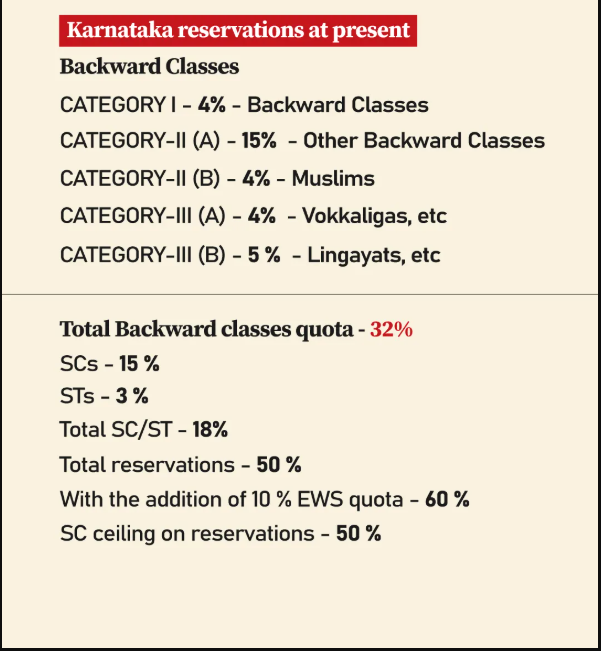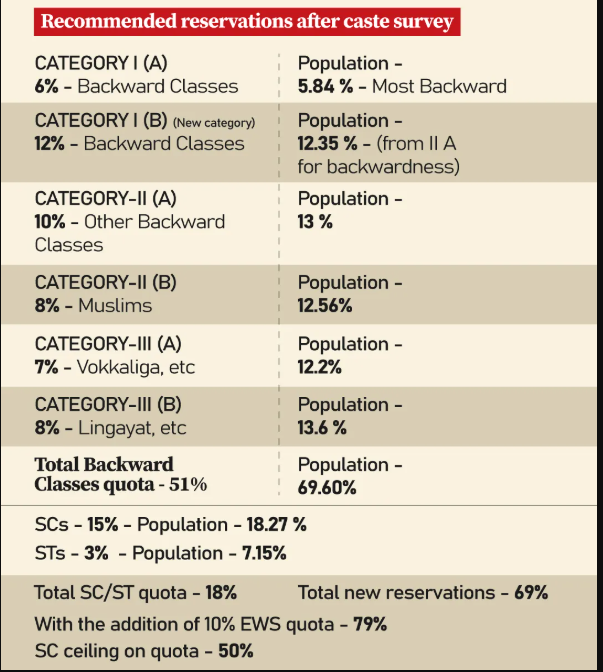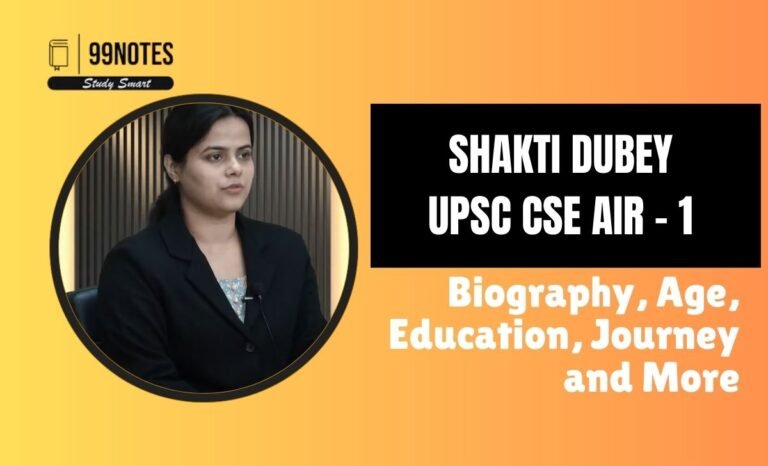Karnataka Caste Survey Proposes Major OBC Quota Hike Amid Political Caution and Legal Hurdles
(Source – Indian Express, Section – Explained, Page – 14)
|
Topic: GS2 – Social Justice |
|
Context |
|
Analysis of the news

Breakdown of Key Communities
- Vokkaligas and Lingayats, traditionally powerful and placed under OBC categories III A and III B, were found to constitute 12.2% and 13.6%, respectively lower than prior estimates. They currently receive 4% and 5% quotas.
- Muslims, in category II B, are estimated at 12.58%, but receive only a 4% quota.
- The broader II A category OBCs stand at 25.36%, while Most Backward Classes (I A) constitute 5.84%.
- SCs and STs are pegged at 18.27% and 7.15%, respectively. The General category is a mere 4.97%.
Recommended Reservation Restructuring

The survey proposes
- Increasing OBC quota by 19 percentage points, from 32% to 51%, after removing the creamy layer (19%).
- A new I B category for the Most Backward Classes carved out of II A, with 12% reservation.
- II A quota reduced to 10%, II B (Muslims) increased from 4% to 8%.
- Quota for Vokkaligas and Lingayats raised by 3 percentage points each.
- Most Backward Classes (I A) quota increased from 4% to 6%.
Implementation Hurdles and Legal Boundaries
-
Implementing the 51% OBC quota would breach the Supreme Court’s 50% reservation cap under the Indra Sawhney judgment, necessitating constitutional amendment by the Centre.
-
However, the existing 10% EWS quota has already taken total reservations beyond the cap in several states, setting a precedent for Karnataka.
Future Outlook and Strategic Moves
-
Chief Minister Siddaramaiah, a Kuruba OBC leader, is seen as steering the report strategically.
-
Possible next steps include a re-survey or phased implementation.
-
The final legislative approval could solidify Siddaramaiah’s image as a champion of OBCs, shaping his political legacy.
|
Practice Question: The Karnataka caste survey has reignited the debate on affirmative action and the adequacy of existing reservation frameworks. Critically examine the implications of the survey’s findings and recommendations on social justice and constitutional limitations in India. (250 Words /15 marks) |

